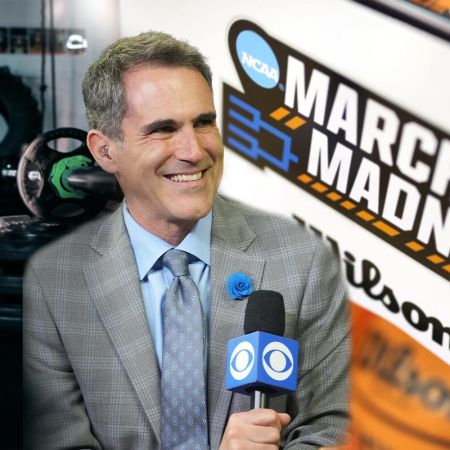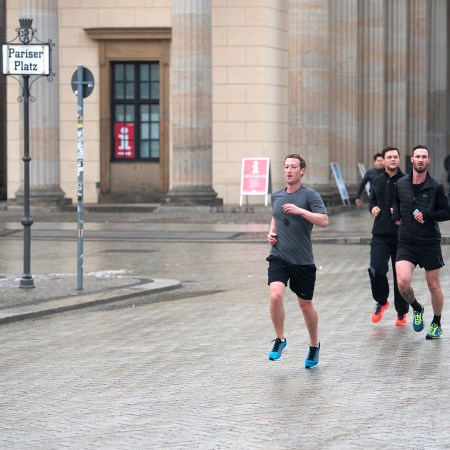A recent post from X account @FilmUpdates shows Jonathan Bailey training for Jurassic World 4, the untitled seventh film for the ever-expanding dino franchise.
The 36-year-old English actor, known for Bridgerton and Broadchurch, is mid-bicep curl in the photo, and looks yoked; whatever he’s been doing has most definitely paid off. Just in time, too — shooting for the film started in Thailand this month.
We can’t fault Bailey’s preparation for his new role. Fitness is a crucial component of the actor’s life; in interviews, he’s discussed his proclivity for swimming in the sea, his embrace of paddleboarding, marathoning and mountaineering. (In 2019 he climbed the highest peaks of England, Scotland and Wales in 24 hours — known as the National Three Peaks Challenge — to raise money for the Motor Neurone Disease Association.) Clearly, Bailey knows best what works for him.
That said, the post prompted a fascinating discussion on the movie industry’s modern expectation that actors must get ripped for roles. One user wrote in response: “Male body standards have grown increasingly unrealistic in Hollywood. The main characters in the original Jurassic Park were all normal looking middle aged people. The new protagonist is some super buff guy for whatever reason.”
It’s a fair point. Time and time again, these IP reboots have staged larger, more vascular protagonists — and often at the expense of a character’s charm, wit, compassion or intelligence. As another account wrote in reaction to that Bailey post: “We are putting the hottest people on earth into movies and then taking every possible acorn of sex, eroticism, or anything approaching sensuality out of them.”

They’ve all become comic book heroes, in other words. We’re 16 years into the Marvel Cinematic Universe era, and its influence has tentacled throughout the entire industry. How many times did Marvel take a relatable everyman, send him off to Intermittent Fasting Camp, then debut him for a rippling Men’s Health cover a month before the latest installment hit the marquee?
One enduring example, Chris Pratt, actually took the reins of the Jurassic Park franchise following his Star-Lord makeover. In Jurassic World (2015), he is a mysterious velociraptor wrangler…who doesn’t have much to say. But he’s jacked and gruff, so who cares?
Obviously, massive leading men are a time-honored staple in Hollywood, as inextricably linked to the summer blockbuster as explosions and car chases. But it feels like there used to be more room for believable body types. In the mid-1990s, when Jurassic Park was first released, action films like Heat, Bad Boys, The Fugitive, Braveheart and Speed featured shapely actors in high-octane roles, but you wouldn’t have said their performances necessitated a certain level of unattainable physical fitness. That was a separate section of the canon — reserved for the likes of Arnold Schwarzenegger and Sylvester Stallone.
The original star of Jumanji was Robin Williams in a wool sweater. By 2017, in Jumanji 2: The Next Level it was The Rock in a safari shirt. You can’t blame the studio execs: that initial remake made just shy of a billion dollars. But is it possible that actors may sacrifice some of their ideation and mirth…when they’re expected to spend as much time in the gym (if not more) than rereading the script and practicing their lines?
Many actors have detailed the ludicrous routines they were forced to observe for coveted roles, like Robert Pattinson after The Batman and Zac Efron following Baywatch. Both have said, in so many words, “Never again.” Two workouts a day, juice diets, grinding shoots…it simply isn’t sustainable.

The trend has compromised the creative process of writers in other genres, too, who might over-rely on the eye candy of a project’s stars, instead of landing on meaningful themes, or revising dialogue to suit the chemistry of a film’s stars. The most successful rom-com in recent memory, Anyone But You, starred Sydney Sweeney and a fully optimized Glen Powell, who trained hard for the film’s Sydney, Australia shoot.
When trailers dropped in autumn of last year, several users online posted stills of Billy Crystal — he of the 5’7″ frame — walking with Meg Ryan through Central Park in When Harry Met Sally. The messaging: we fell hard for Harry, didn’t we? Regardless of what he looked like without his shirt off! If the widely regarded best rom-com of all time didn’t need months of HIIT workouts for its co-stars, why must today’s treat abs like a job requirement?
Again, the easiest answer is the box office. The murky market forces that dictate the choosiness of big tech streaming giants and the floundering old studios. Barbie was so successful thanks to an all-out marketing blitz. Glen Powell’s biceps translate easily to a billboard. Billy Crystal’s zany ability to explain his weirdest dreams, less so. Sure, it’s possible for a superhero-esque physical presence to coexist with an emotionally rich character (Daniel Craig as Bond). And to be sure, the Dune movies have succeeded with less physical oomph from their co-stars. But the franchise also has four of the most bankable under-30 stars in Hollywood.
Finally, we can accept and understand the vanity of today’s leading men (or the vanity of their PR teams, at least). If you got recruited for a dating show that started shooting in two months’ time you’d be at Crunch Fitness tomorrow, right?
But we’d urge the industry to remember that some of the smoothest action stars over the last 50 years weren’t just muscley, they were acerbic. Think about characters portrayed by the likes of Harrison Ford, Denzel Washington and Tom Hanks. They scowled, snarled, gave speeches. They weren’t perfect all the time — and neither were their bodies. That relatability rang true, lending strength to the story…where it was needed the most.
The Charge will help you move better, think clearer and stay in the game longer. Subscribe to our wellness newsletter today.



















